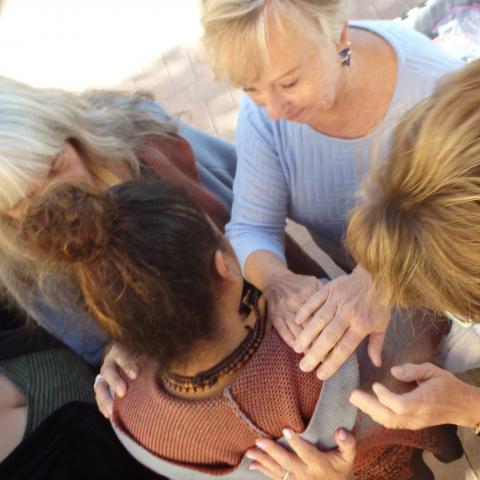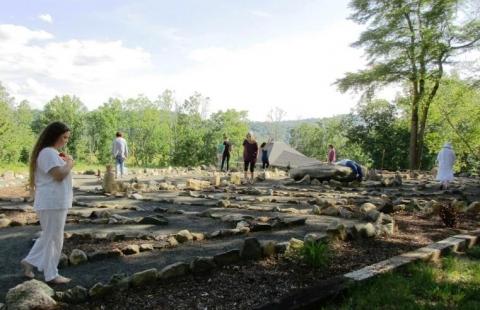“I call on the next generation of young women to be the mothers of the Compassionate Revolution that this century so desperately needs. You have a special role to play in creating a better world.” - Dalai Lama
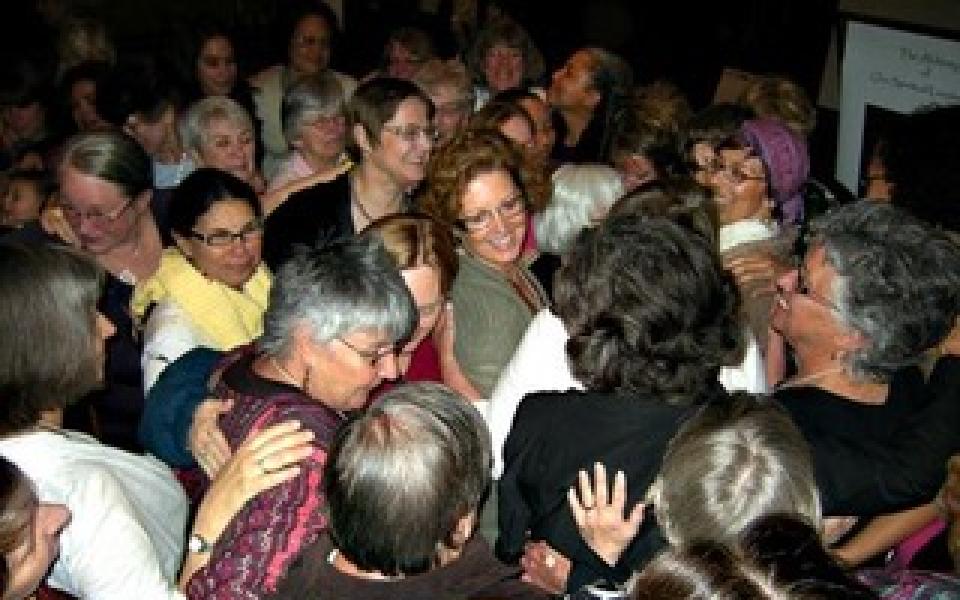
"This looks like the Divine Feminine to me", Schaaf said in describing this spontaneous group hug at the end of Women of Spirit and Faith's Alchemy 1 gathering in 2011. Photo Captured by Ruth Broyde Sharone.
“In the West, there ain’t much feminine energy going on.” - Laura George
“Where is Her voice in expression of spiritual leadership in your tradition today? She's been nowhere.” - Kathe Schaaf
“Look at who is the most disproportionately affected by any disaster on the planet: women, girls, and the environment.” - Sande Hart
Concerns like the ones above, shared by leaders from three URI Cooperation Circles, are consistent when looking at the world for women today. But, the story doesn’t end there, and to celebrate Women’s History Month, I wanted to explore how these women are also filled with hope, purpose, and a sense of belonging in connection to what’s known as the “Divine Feminine.” This term is ever-increasing in use, and yet mysterious to many. When asked what is the Divine Feminine, words such as creativity, balance, wholeness, energy, love, protection, and magic were all used; descriptions that sparked further curiosity.
The Divine Feminine Is Back
All three women I spoke to agreed that the world is shifting to a place where feminine energy is becoming more present, whether culture is ready for her or not -- and each have their own take on the question of “why now?”
Sande Hart, founder of Spiritual and Religious Alliance for Hope (S.A.R.A.H.), a URI Cooperation Circle, said the surfacing of discussion on the Divine Feminine is a result of the conflict in the world. “It's the result of the tensions in the world that are giving [the Divine Feminine] wings, giving it flight because it's part of our survival, in that we have a call to something new, something different.”
Founder of spiritual think tank, The Oracle Institute, Laura George, attributes it to the Trickle-Down Deity Theory, which states that major paradigm shifts happen when the Godhead shifts. Throughout the history of the world, she said there have been four spiritual paradigms (All is One, Great Mother, Gods and Goddesses, God the Father), each of which influence society’s view of the Godhead and thus cultural beliefs and institutional policies. George explained that, since the most recent paradigm looks to a masculine deity, the societal norm today is a masculine approach to leadership and structure. This has resulted in an imbalance leading to consequences we see today, such as the environmental repercussions of climate change.
But, George believes we are on the cusp of a change and are now in the process of shifting into a new paradigm, which will be the “Balanced Godhead.”
“While it may take a decade or another 100 years, there’s no doubt in my mind that the Godhead is shifting and it's shifting to make room for the Sacred Feminine. Appreciation of the feminine was never fully lost, but she does need to return to the Godhead because now it's just a seesaw, totally out of balance, and until she's back up there, there’s no hope to solving the concrete problems."
Kathe Schaaf, a leader of Women of Spirit and Faith, a URI North America Affiliate, thinks the era of the feminine is here already.
“The good news is the Divine Feminine is here now, she's back with bells and whistles, and millions upon millions of -- not followers, because she wouldn't want that -- but co-creators to work with her, to play with her, to engage with her, to listen for ‘what is my assignment in this great big pattern of the uprising of that feminine wisdom?’, ‘where am I supposed to speak, what am I supposed to do, how am I to help other voices be heard?’”
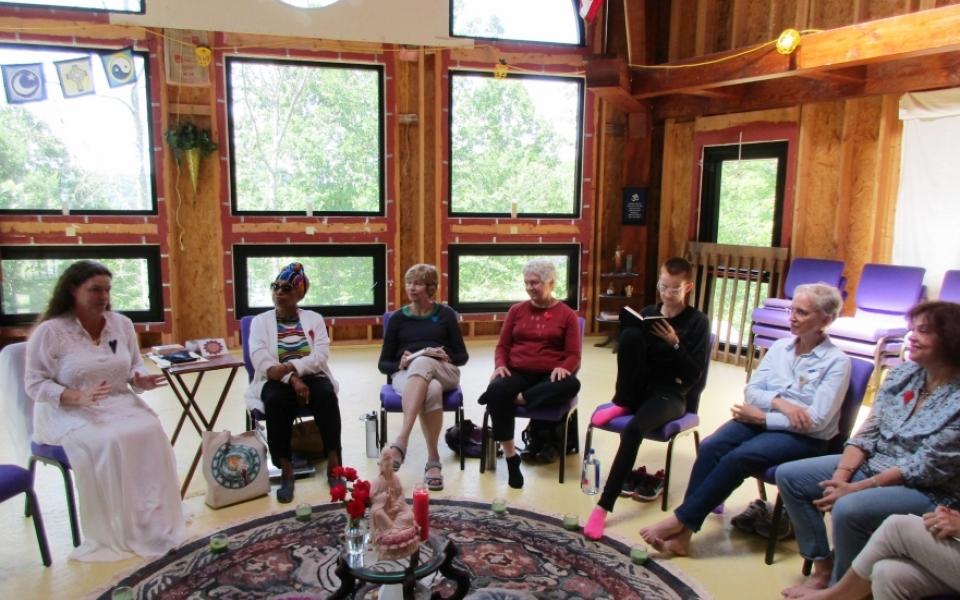
Women participate in a goddess class at The Oracle Institute's Peace Pentagon.
Replacing Patriarchy with Partnership
In describing the character of the Divine Feminine, the women used the metaphor of a mother--the courageous protector filled with mercy, compassion, and empathy. As all human beings come to earth through the womb, the Divine Feminine is not aiming to overthrow masculine energy, a common misconception, but to balance it, they said. As Hart put it, "The Divine Feminine replaces patriarchy with partnership."
Hart described this further, “When we come from a place of feminine principles - balance of masculine and feminine - curiosity replaces fear, generosity replaces greed, complacency is replaced with creativity…the Divine Feminine honors the Divine Masculine.”
In this balance exists an innate human design where all parties work to protect and restore all they consider sacred. Schaaf described that this design is different than the hierarchical structure that dominates the world. This is why, she said, a movement towards circle principles, where shared leadership is the focus, is also on the rise. This applies to interfaith work as well.
Schaaf explained, “When I experience the Divine Feminine, I experience wholeness and oneness. There's a sacred space that's big enough to hold us all...That's one way that [this concept] relates directly to interfaith. I think in many ways the Divine Feminine offers an interfaith space unparalleled, a space where everyone is welcome and where everyone's wholeness is honored and acknowledged.”
Two components of successful interfaith peacebuilding are the art of listening and the curiosity to question the assumptions within one’s self. These skills are also necessary in understanding the Divine Feminine as she challenges one to pause and listen to the more that is possible, the more that is restorative. George described the process of coming to know the Divine Feminine as “a rediscovery of what you already knew deep down.”
Schaaf acknowledged that she sees countless young women in that same process of discovery, realizing the magic they hold, and that being with them in this process is a privilege. "There are so many women that are hungry for the message of the Divine Feminine. They are hungry to experience her in the company of other women, they are hungry to circle, they are hungry to trust women again. There are a hundred times more women that are hungry than are already in ‘the hive’ so that's the opportunity, that's the work."
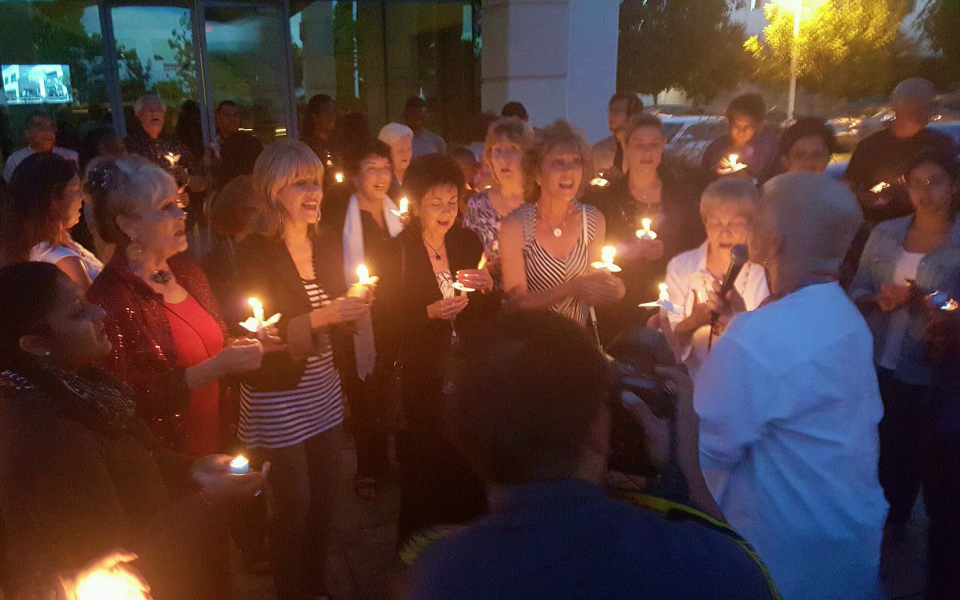
Women from S.A.R.A.H. harnessing the Divine Feminine through circle principles.
A Call to More
With such thirst to understand the Sacred Feminine, these leaders ask the URI community to lean in, to create more women’s circles and spaces for gender reconciliation, to courageously question our own assumptions and pay attention to the shifts so we can love others where they are.
Hart noted that this work begins individually, on our couches, asking questions and listening to whispers of wisdom, but it must continue in community, in circles where every voice is given a platform to be heard. She said this is how we create a new “communal neural pathway”, or in other words, a new culture that welcomes in the feminine. Shifting what the world has held for thousands of years is uncomfortable and will always face resistance, but Hart said, there’s also the choice to step willingly into “a state of awe and wonder as to where we are going.”
For more information on the Divine Feminine, check out these URI Cooperation Circle websites:
Women of Spirit and Faith: http://womenofspiritandfaith.org/
The Oracle Institute: http://www.theoracleinstitute.org/
Spiritual And Religious Alliance for Hope: https://www.sarah4hope.org/
___
This article was written by URI Storytelling Intern Jessica Gorman.

